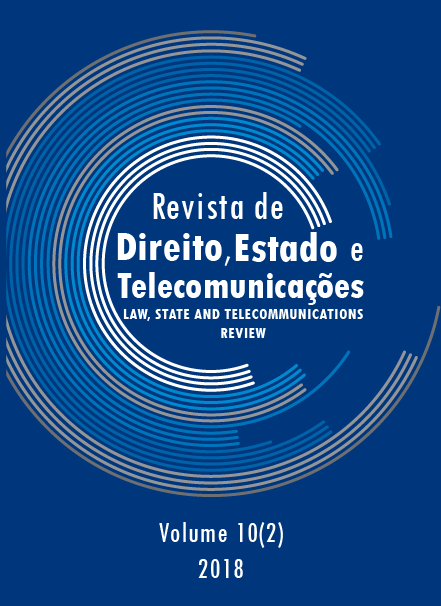Before and After the Reform: Fixed Line Internet Penetration in Mexican Households
DOI:
https://doi.org/10.26512/lstr.v10i2.21490Keywords:
Mexico Telecommunications Reform, public policy evaluation, digital divide, ICT4D, digital inclusionAbstract
Purpose ”“ Despite being the second largest mobile market in Latin America regarding subscribers, Mexico’s penetration levels remain lower than the regional averages. The aim of this paper is to evaluate whether the Mexican 2013 Telecommunications and Broadcasting Reform helped mitigate or exacerbate the digital divide. In particular, we evaluate if the Reform had an impact on fixed-line internet penetration in Mexico.
Methodology/approach/design ”“ For the assessment, the 2010 Census and 2015 Intercensal Survey data used to create impact indexes through Generalized Linear Models (GLMs) estimations.
Findings ”“ Through a quintile analysis were confronted by results, with the intention of showing the average of internet penetration in each income group. The data obtained suggest that internet penetration had positive variations in all the quintiles indicating that recent regulatory changes in telecommunications matter had helped to reduce the digital divide.
Practical implications ”“ The poor and vulnerable groups remain at the digital exclusion; these groups need more digital inclusion actions.
Downloads
References
BARRANTES, R.; GALPERIN, H. Can the poor afford mobile telephony? Evidence from Latin America. Telecommunications Policy, v. 32, n. 8, p. 521”“530, set. 2008.
CÁMARA DE DIPUTADOS. Ley Federal de Telecomunicaciones y Radiodifusión. Disponível em: <http://www.diputados.gob.mx/LeyesBiblio/pdf/LFTR_150618.pdf>. Acesso em: 6 maio. 2018.
CÁMARA DE DIPUTADOS. Constitución Política de los Estados Unidos Mexicanos. Disponível em: <http://www.diputados.gob.mx/LeyesBiblio/pdf/1_150917.pdf>. Acesso em: 5 mar. 2018.
CASANUEVA, C. Telecomunicaciones, servicio universal y pobreza en México: hacia una evaluación de una política pública: 1990-2013. In: Las Telecomunicaciones en México: Regulación y Reforma Competencia, Desarrollo de Infraestructura e Inclusión Digital (1990-2017). Ciudad de México: Porrúa, 2018. p. 51.
CHAUDHURI, A.; FLAMM, K. S.; HORRIGAN, J. An analysis of the determinants of internet access. Telecommunications Policy. Anais...Pergamon, out. 2005
CONEVAL. Evolución de las líneas de bienestar y de la canasta alimentaria. Disponível em: <http://www.coneval.org.mx/Medicion/MP/Paginas/Lineas-de-bienestar-y-canasta-basica.aspx>. Acesso em: 3 fev. 2018.
CONEVAL. Coneval Informa La Evolución de la Pobreza 2010-2016. Disponível em: <https://www.coneval.org.mx/SalaPrensa/Comunicadosprensa/Documents/Comunicado-09-Medicion-pobreza-2016.pdf>. Acesso em: 4 mar. 2018.
DE CASTILLA, C. Telecomunicaciones y radiodifusión en MéxicoMéxicoUNAM, , 2018.
FEASEY, R. Confusion, denial and anger: The response of the telecommunications industry to the challenge of the Internet. Telecommunications Policy, v. 39, n. 6, p. 444”“449, 2015.
FLAMM, K.; CHAUDHURI, A. An analysis of the determinants of broadband access. Telecommunications Policy, v. 31, n. 6”“7, p. 312”“326, 2007.
HILBERT, M. When is cheap, cheap enough to bridge the digital divide? Modeling income related structural challenges of technology diffusion in Latin America. World Development, v. 38, n. 5, p. 756”“770, 2010.
HILBERT, M. The bad news is that the digital access divide is here to stay: Domestically installed bandwidths among 172 countries for 1986-2014. Telecommunications Policy, v. 40, n. 6, p. 567”“581, jun. 2016.
IFT. Reportes estadísticos. Disponível em: <https://bit.ift.org.mx/BitWebApp/>. Acesso em: 7 ago. 2018.
INEGI. Censo de Población y Vivienda 2010. Disponível em: <http://www.beta.inegi.org.mx/proyectos/ccpv/2010/>. Acesso em: 19 mar. 2019.
INEGI. Encuesta Intercensal 2015. Disponível em: <http://www.beta.inegi.org.mx/proyectos/enchogares/especiales/intercensal/>. Acesso em: 19 mar. 2019.
INEGI. Encuesta Nacional de Ingresos y Gastos de los Hogares (ENIGH) 2016. Disponível em: <http://www.beta.inegi.org.mx/proyectos/enchogares/regulares/enigh/nc/2016/default.html>. Acesso em: 2 fev. 2018.
INEGI. Comunicado de prensa núm. 122/17: aumentan uso de internet, teléfonos inteligentes y tv digital. Disponível em: <http://www.inegi.org.mx/saladeprensa/boletines/2017/especiales/especiales2017_03_02.pdf>. Acesso em: 1 fev. 2018a.
INEGI. Encuesta Nacional sobre Disponibilidad y Uso de las Tecnologías de la Información en los Hogares 2016. Disponível em: <http://www.beta.inegi.org.mx/proyectos/enchogares/regulares/dutih/2017/>. Acesso em: 2 mar. 2018b.
MCCULLAGH, P. Generalized linear models. European Journal of Operational Research, v. 16, n. 3, p. 285”“292, 1984.
NELDER, J. A. A reformulation of linear models. Journal of the Royal Statistical Society. Series A (General), p. 48”“77, 1977.
OECD. Estudios Económicos de la OCDE. Disponível em: <https://www.oecd.org/eco/surveys/mexico-2017-OECD-Estudios-economicos-de-la-ocde-vision-general.pdf>. Acesso em: 1 abr. 2018.
OVANDO, C.; OLIVERA, E. Was household internet adoption driven by the reform? Evaluation of the 2013 telecommunication reform in Mexico. Telecommunications Policy, 2018.
PRIEGER, J. E. The broadband digital divide and the economic benefits of mobile broadband for rural areas. Telecommunications Policy, v. 37, n. 6”“7, p. 483”“502, 2013.
QUINTANILLA, G. Política informática en México: Desarrollo, lecciones y avances. Espacios Públicos, v. 19, n. 45, 2016.
RAMÓN, M.; PERAL, B.; ARENAS, J. Elderly persons and Internet use. Social Science Computer Review, v. 31, n. 4, p. 389”“403, 2013.
TOUDERT, D. La brecha digital en los contextos de marginación socioterritorial en localidades mexicanas: exploración y discusión. Comunicación y sociedad, n. 19, p. 153”“180, 2013.
VAN-DEURSEN, A. J.; VAN-DIJK, J. A. The digital divide shifts to differences in usage. New Media & Society, v. 16, n. 3, p. 507”“526, maio 2014.
VAN-DEURSEN, A.; VAN-DIJK, J. Internet skills and the digital divide. New media & society, v. 13, n. 6, p. 893”“911, 2011.
Downloads
Published
How to Cite
Issue
Section
License
By submitting this paper to the Law, State and Telecommunications Review,
I hereby declare that I agree to the terms of the Creative Commons Attribution 4.0 International (CC BY 4.0).


